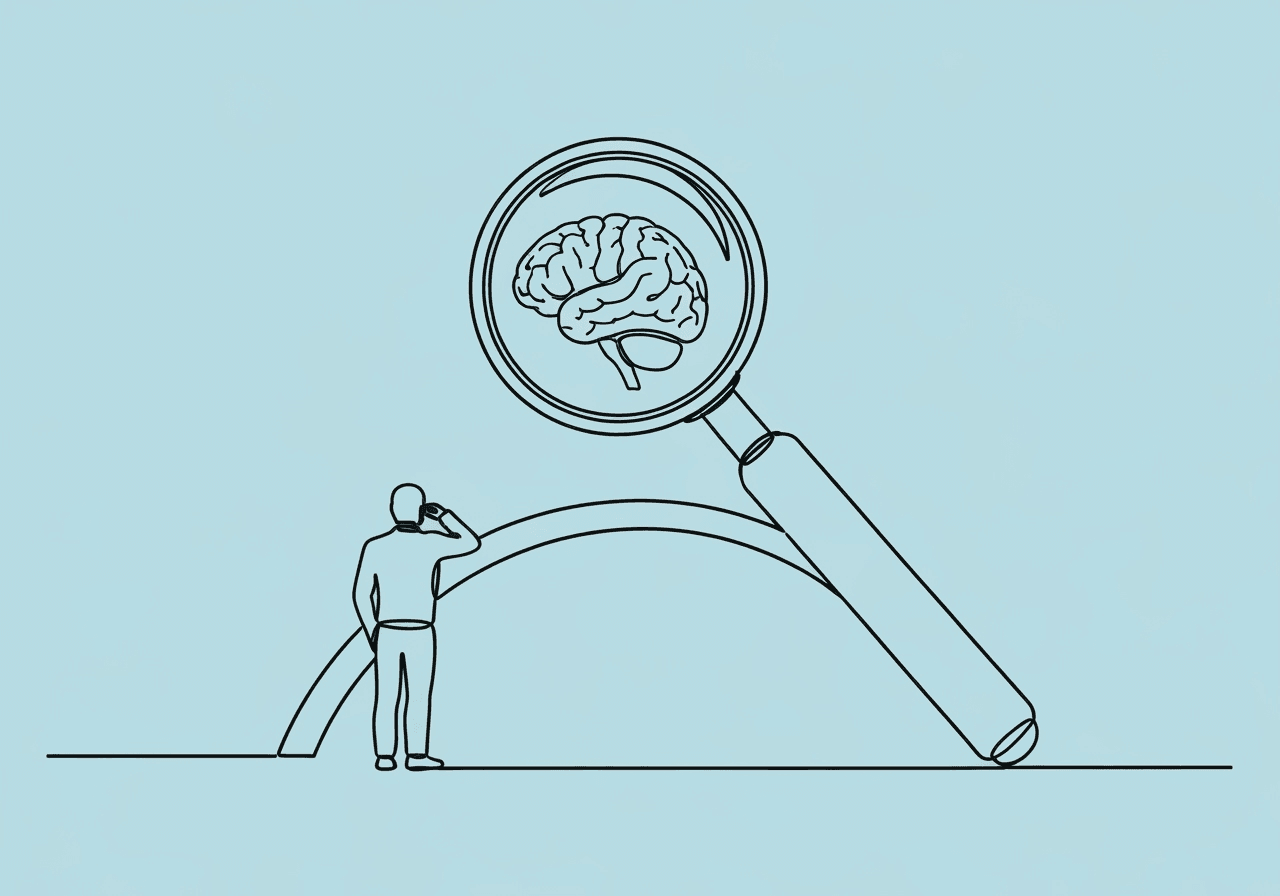Radical Behaviorism Glossary for ABA: Key Terms

In Applied Behavior Analysis (ABA), a dynamic field, understanding philosophical roots can reshape intervention strategies for BCBAs and RBT students. B.F. Skinner's radical behaviorism forms the bedrock of ABA. It emphasizes observable and environmental influences on behavior over vague internal states. This foundation ensures precise, evidence-based practices that drive meaningful outcomes for learners, especially those with autism spectrum disorder (Treatment and Intervention for Autism Spectrum Disorder).
For BCBAs and RBT students, grasping a Radical Behaviorism glossary ABA goes beyond academics. It's vital for ethical, objective documentation and effective programming. This article explores radical behaviorism's role in ABA. It defines key terms like private events and explanatory fiction. You'll also find implications for session notes and functional behavior assessments (FBAs), plus tips to avoid mentalistic pitfalls. FAQs clarify common confusions.
Key Takeaways from Radical Behaviorism in ABA
- Radical behaviorism treats all behaviors, including internal ones, as shaped by the environment, guiding objective ABA practices.
- Key terms like private events and explanatory fiction help avoid vague explanations in documentation and assessments.
- Understanding methodological vs radical behaviorism ensures comprehensive analysis, integrating observable and self-reported data.
- RB alignment supports BACB ethics by prioritizing empirical evidence over mentalistic assumptions.
- Applying these concepts improves FBAs and session notes, boosting client progress through modifiable contingencies.
Introduction to Radical Behaviorism (RB) as the Foundation of ABA
Radical behaviorism, developed by B.F. Skinner in the mid-20th century, extends beyond earlier behaviorist traditions. It treats all behavior—including internal experiences—as products of environmental interactions. According to the APA Dictionary of Psychology, it positions behavior analysis as a natural science. The focus is on prediction and control through functional relations, not hypothetical inner causes.
This philosophy underpins ABA by rejecting non-empirical explanations. It prioritizes observable data. Skinner argued that behavior emerges from contingencies of reinforcement. These shape everything from skill acquisition to self-management. For ABA professionals, RB ensures interventions target real environmental variables. This aligns with the Behavior Analyst Certification Board's (BACB) ethics code for scientific rigor (Ethics Code for Behavior Analysts).
In practice, RB guides BCBAs in designing programs that manipulate antecedents and consequences effectively. We don't just assume the learner knows better. Instead, we dig into their reinforcement history to build adaptive behaviors. This fosters measurable progress. It reduces reliance on subjective interpretations that can bias assessments.
Radical Behaviorism Glossary ABA: Key Definitions
A solid Radical Behaviorism glossary ABA equips practitioners to communicate precisely. It helps avoid conceptual errors. Below, key terms are defined with their roles in ABA. These draw from Skinner's foundational works and modern interpretations. Such distinctions promote clarity in training and application. They differentiate RB from other paradigms.
Radical Behaviorism
Consider how B.F. Skinner revolutionized psychology in the mid-20th century. Radical behaviorism analyzes all forms of behavior—public (observable) and private (internal)—as governed by environmental and historical variables. In his 1945 paper, "The Operational Analysis of Psychological Terms" (The Operational Analysis of Psychological Terms), Skinner rejected mentalistic causes. He viewed behavior as a subject for natural science, without invoking unobservable "minds," as elaborated in Radical Behaviorism Overview.
In ABA, this means treating thoughts or emotions as behaviors shaped by reinforcement. It enables comprehensive interventions. For example, a BCBA might address anxiety not as an innate state but as a private event maintained by escape contingencies.
Methodological Behaviorism
Think back to the early 1900s, when John B. Watson laid the groundwork. Methodological behaviorism limits study to publicly observable behaviors. It excludes private events as unscientific due to their inaccessibility. Per Study Notes ABA, it emphasizes methodological rigor but ignores internal experiences. This contrasts with RB's broader scope.
The key difference in methodological vs radical behaviorism lies in this exclusion. Methodological views private events as irrelevant, while radical integrates them as behaviors. For RBT students, recognizing this helps appreciate why ABA evolved to include self-reports in functional analyses.
Private Events
Internal experiences like thoughts, feelings, or sensations define private events. These are only accessible to the individual. In radical behaviorism, they are behaviors subject to the same principles as public actions. Yet they are harder to measure directly, as noted in Behavior Analyst Study.
ABA practitioners account for private events through verbal reports or physiological correlates. For instance, self-monitoring tools can track a learner's reported frustration during transitions. This inclusion strengthens individualized education programs (IEPs). It addresses hidden reinforcers.
Public Events
Observable, measurable behaviors or stimuli available for direct scrutiny by others—these are public events. Radical behaviorism treats them as the primary data for analysis, per Radical Behaviorism Origin Story. They form the basis for replication and ethical verification in ABA.
In sessions, public events like task completion rates guide data collection. This ensures objectivity. Linking methodological vs radical behaviorism, public events were methodological behaviorism's sole focus. But RB expands to correlate them with private counterparts for fuller insights.
Explanatory Fiction
Mythical or circular explanations for behavior, such as "free will" or "innate knowledge" without empirical support—these are explanatory fictions. Skinner critiqued them in works like About Behaviorism (1974). He argued they substitute for functional analysis, as detailed in Pass the Big ABA Exam.
In ABA, avoiding explanatory fiction prevents flawed hypotheses. For instance, saying a child "misbehaves to annoy" ignores environmental triggers. Instead, practitioners identify antecedents. This fosters precise FBAs. The term underscores RB's commitment to parsimony—explaining behavior with observable contingencies.
Mentalism
Explaining behavior via unobservable internal states like intentions or cognitions—this is mentalism. RB rejects it as non-causal. According to Psychologist World, mentalism creates pseudoscience by circularly defining causes from effects.
ABA contrasts this by focusing on environmental manipulations. A mentalistic note like "client felt defiant" yields to "client escaped demand via tantrum." For deeper philosophical ties, explore our Philosophical Assumptions of ABA: Essential Guide for BCBAs.
These terms interconnect. RB encompasses private and public events. It dismisses mentalism and explanatory fictions while surpassing methodological limits.
Documentation Implications: Why Understanding RB Terms Is Crucial for Objective Session Notes and FBAs
Mastering a Radical Behaviorism glossary ABA directly impacts documentation quality. It ensures BACB-compliant records that prioritize objectivity (Ethics Code for Behavior Analysts). Session notes and FBAs must describe behaviors in functional, non-mentalistic terms. This supports replication and ethical decision-making.
Consider session notes. Using RB principles avoids phrases like "the learner was frustrated"—an explanatory fiction that assumes unverified private events. Instead, document public events: "learner vocalized 'stop' and turned away during 3/5 math trials." Pair this with antecedents and consequences. This precision aids progress tracking and legal defensibility. Vague mentalism can undermine intervention validity, as guided by BACB standards on objective documentation (Ethics Code for Behavior Analysts).
In FBAs, distinguishing methodological vs radical behaviorism informs hypothesis statements. A methodological focus might overlook private events like self-reported pain maintaining escape behavior. RB integrates them via indirect assessments. For RBTs, this means logging observable data, such as "increased compliance post-reinforcer." It helps hypothesize functions accurately and reduces errors in behavior intervention plans (BIPs).
Practical tip: Train teams to self-audit notes for mentalism. Replace it with contingency descriptions. Tools like Praxis Notes' AI-powered templates can flag subjective language. They align with HIPAA standards for accurate documentation (HIPAA for Professionals). For reinforcement strategies in BIPs, see our ABA Reinforcement and Punishment: Key Definitions. Ultimately, RB-grounded documentation enhances client outcomes. It focuses on modifiable environmental factors.
Frequently Asked Questions
How does radical behaviorism differ from methodological behaviorism?
Radical behaviorism, per Skinner, includes private events like thoughts as behaviors shaped by the environment. Methodological behaviorism (Watson) limits analysis to observable public events only. This expansion in RB allows ABA to address internal experiences scientifically, without mentalistic assumptions, as outlined in Psychology Writing.
What are practical examples of private events in ABA practice?
Private events, such as a learner's self-reported anxiety during social skills training, are treated as behaviors influenced by past reinforcements. Practitioners might use verbal prompts to access them. Then, they apply desensitization. This ensures interventions target functional relations rather than assuming innate traits (Behavior Analyst Study).
How does the concept of explanatory fiction apply to everyday ABA challenges?
Explanatory fiction arises when behaviors are blamed on "laziness" instead of analyzing contingencies, like insufficient reinforcement for task completion. RB counters this by verifying environmental causes. It improves FBA accuracy and avoids circular explanations (Pass the Big ABA Exam).
Why is avoiding mentalism important in BCBA documentation?
Mentalism introduces untestable internal causes. It violates RB's empirical focus and BACB ethics. Objective notes using public events ensure data-driven BIPs. For instance, document "aggression followed by attention" over "anger outburst." This supports ethical, replicable practice (Study Notes ABA).
Can radical behaviorism explain complex behaviors like verbal communication in ABA?
Yes, RB views verbal behavior as operant responses shaped by social reinforcements. This extends Skinner's analysis. It informs tact and mand training, linking to environmental histories without cognitive intermediaries. Explore further in our ABA Verbal Operants Definitions: Mand, Tact & More (Radical Behaviorism Origin Story).
What role do public events play in distinguishing RB from other philosophies?
Public events provide the measurable foundation for RB. They enable experimental control, unlike mentalism's hypotheticals. They anchor ABA data collection. This correlates with private events for holistic analysis (Radical Behaviorism Overview).
Conclusion
Radical behaviorism anchors ABA in a scientific, environmentally focused lens. Terms like private events and explanatory fiction guide precise practice. By embracing this Radical Behaviorism glossary ABA, BCBAs and RBT students sidestep mentalistic pitfalls. This enhances documentation and interventions. Evidence from Skinner's legacy shows RB's power in yielding observable, replicable results that empower learners.
For practical impact, audit your next FBA for RB alignment. Replace subjective terms with contingency descriptions. Integrate self-monitoring for private events in BIPs to boost engagement. Review BACB resources regularly to stay grounded. Ground your practice in these principles. You'll see real changes in client progress, as observed in sessions.
Popular in Behavior Analysis Concepts
- 1
Partial Interval vs Whole Interval vs MTS: ABA Guide
9676 min read - 2
ABA Prompting Hierarchy & Prompt Fading: RBT How-To Guide with Examples
9437 min read - 3
Functional Behavior Assessment ABA: Complete 2025 Guide [Step-by-Step]
7696 min read - 4
DRA vs DRI vs DRO vs DRL: The Clear RBT Comparison Guide
7649 min read - 5
ABA Graph Analysis Terms: Level, Trend, Variability
7436 min read
Popular in Behavior Analysis Concepts
- 1
Partial Interval vs Whole Interval vs MTS: ABA Guide
9676 min read - 2
ABA Prompting Hierarchy & Prompt Fading: RBT How-To Guide with Examples
9437 min read - 3
Functional Behavior Assessment ABA: Complete 2025 Guide [Step-by-Step]
7696 min read - 4
DRA vs DRI vs DRO vs DRL: The Clear RBT Comparison Guide
7649 min read - 5
ABA Graph Analysis Terms: Level, Trend, Variability
7436 min read
Related Resources
Explore more helpful content on similar topics

Essential Visual Analysis Terminology for ABA
Unlock essential Visual Analysis Terminology in ABA to master graph interpretation. Explore definitions for Level, Trend, Variability, Data Path, and more – ideal for BCBAs, RBTs, and professionals seeking to enhance behavioral analysis skills.

ABA Graph Analysis Terms: Level, Trend, Variability
Explore key ABA graph analysis terms: level, trend, and variability. Discover how BCBAs and RBTs use these visual properties to interpret data, make clinical decisions, and optimize interventions in behavior analysis.

Master Stimulus Control in ABA: SD vs S-Delta Explained
Unlock Stimulus Control ABA definitions: Explore SD vs S-Delta with real examples. Master stimulus discrimination training to boost skill teaching, generalization, and practical applications for RBTs and BCBAs.